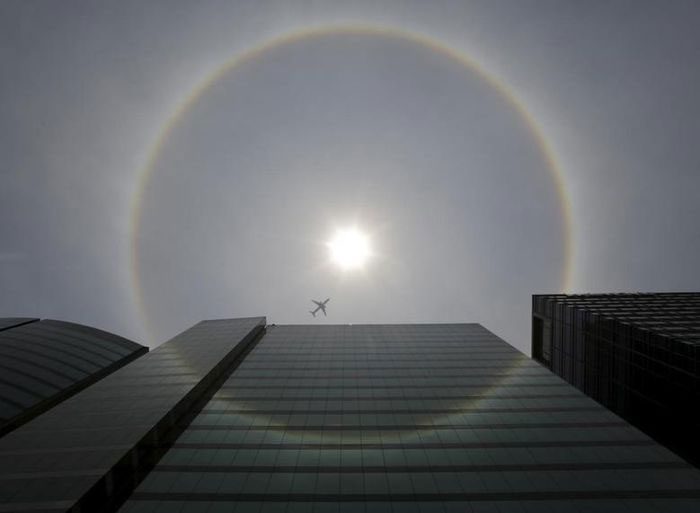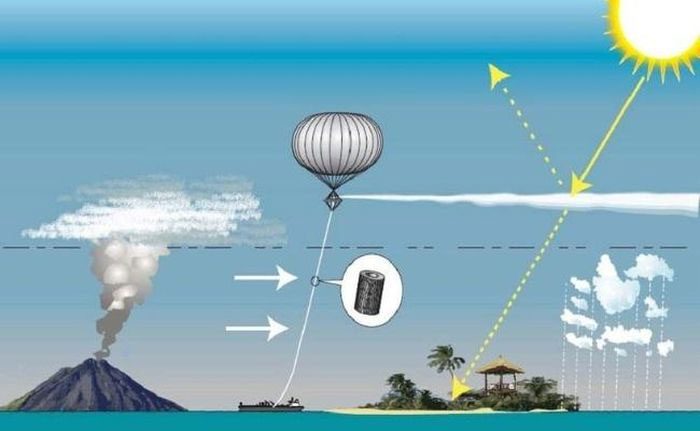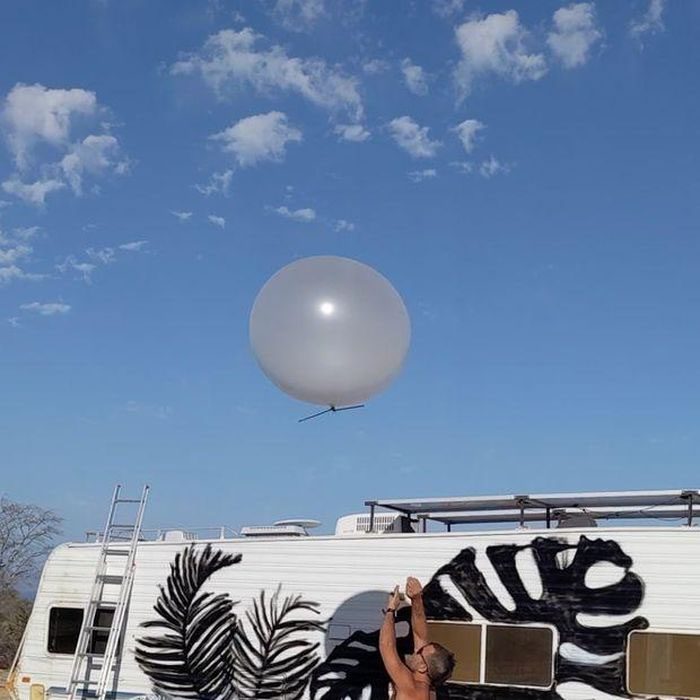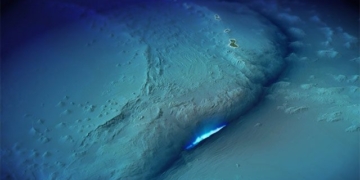Make Sunset aims to inject sulfur dioxide (SO2) into the atmosphere to block radiation from reaching Earth’s surface, thereby slowing down global warming. However, the plan has been halted due to concerns over its consequences.
According to the Wall Street Journal, the Mexican government has recently indefinitely postponed a project that involved using reflective particles contained in high-altitude balloons released into the stratosphere to cool the Earth and reverse global warming.

They believe this measure will cool the Earth. (Image: Shutterstock).
Make Sunset, founded by Luke Iseman, is the startup conducting this experiment. The company has successfully raised $750,000 in funding with the ambition to sell “cooling solutions” to American companies. The founder stated that these funds would be used to inject SO2 into the stratosphere.
He believes that if a significant amount of this gas is released into the stratosphere, sunlight will be reflected back, reducing the surrounding air temperature. Make Sunset asserts that this is a “cooling system” aimed at addressing the tons of CO2 emitted globally each year.
Project Halted Due to Lack of Regulation
This project launched its first high-altitude balloon in 2022, with plans for another release in January 2023 in Baja California Sur, Mexico. However, climate experts have expressed uncertainty about how the compounds used in this method will react with substances present in the atmosphere. They are concerned about the unpredictable consequences of using SO2.

The SO2 will be carried into the atmosphere by balloons to block sunlight from reaching Earth. (Image: Wikipedia).
As a result, on January 13, the Mexican Ministry of Environment and Natural Resources announced an indefinite suspension of Make Sunset’s project. Furthermore, all geoengineering projects are banned in the country as there is currently no international treaty that specifically regulates such activities.
In 2010, delegates at the Convention on Biological Diversity, including Mexico, agreed to temporarily halt geoengineering activities, including small-scale research.
“I hope for a dialogue between both parties. I was quite surprised by the government’s strong response and decision,” said the founder of Make Sunset. In reality, Iseman’s company had not sought local government approval or consulted the public about its experiment.
Speaking to the Wall Street Journal, Iseman mentioned that he released a balloon carrying a few grams of SO2 in April and planned to release more balloons with larger amounts of gas this month.
The founder stated that he purchased these balloons from an e-commerce platform and obtained SO2 from an industrial supplies dealer. Therefore, upon hearing the news of the indefinite postponement, Iseman was very disappointed with the government but felt he had to accept the cancellation of his efforts as requested by the authorities.
Environmental Risks
Iseman initiated this project because he believes that governments are still sluggish and slow in taking action on global climate issues. He consulted scientists about his Earth cooling project but later decided to design and plan it himself.
Many of these scientists indicated that a small amount of SO2 released into the stratosphere via balloons would not significantly impact global temperature reduction. However, some scientists also argued that geoengineering techniques could provide substantial benefits if properly researched and implemented.

Make Sunset released its first balloon in April 2022. (Image: Make Sunset).
According to the Wall Street Journal, despite extensive discussions, geoengineering remains a relatively new field that has never been empirically tested due to potential environmental harm.
A 2019 study by Harvard University published in the journal Nature Climate Change indicated that using solar reflection methods could reduce global warming by half. However, this would come at the cost of significantly decreased rainfall in certain regions of the world.
In March 2021, the U.S. National Academy of Sciences proposed that the government invest $200 million in research programs for Earth cooling methods, allowing for public feedback and strict government oversight.
In April 2021, an experiment involving balloon releases in Sweden conducted by Harvard University and philanthropists was indefinitely postponed due to opposition from environmental organizations and local residents.


















































